One of the safest materials for cookware and dinnerware is glass. This puts opal glass in a good spot because of its glass material. A healthy dinnerware is made out of Opal glass; they are naturally non-porous or non-toxic dinnerware and will not contaminate your food.
On the other hand Bone china is made out of animal bone and is sometimes called bone ash; the animal bone is mixed with porcelain clay and heated at a low temperature to bring out a fine lightweight bone china dinnerware.
In the world of dinnerware brands/materials, opal glass vs bone china is compared a lot. Both dinnerwares are very healthy for dishing food, the major difference is in their makeup materials.
OPAL GLASS VS BONE CHINA
Opal glass and Bone china are popular materials used in the production of several home and kitchen wares especially dinnerware sets. Do Opal glass and Bone china have the same quality?
Let’s find out the comparison or differences between Opal glass vs Bone China below;
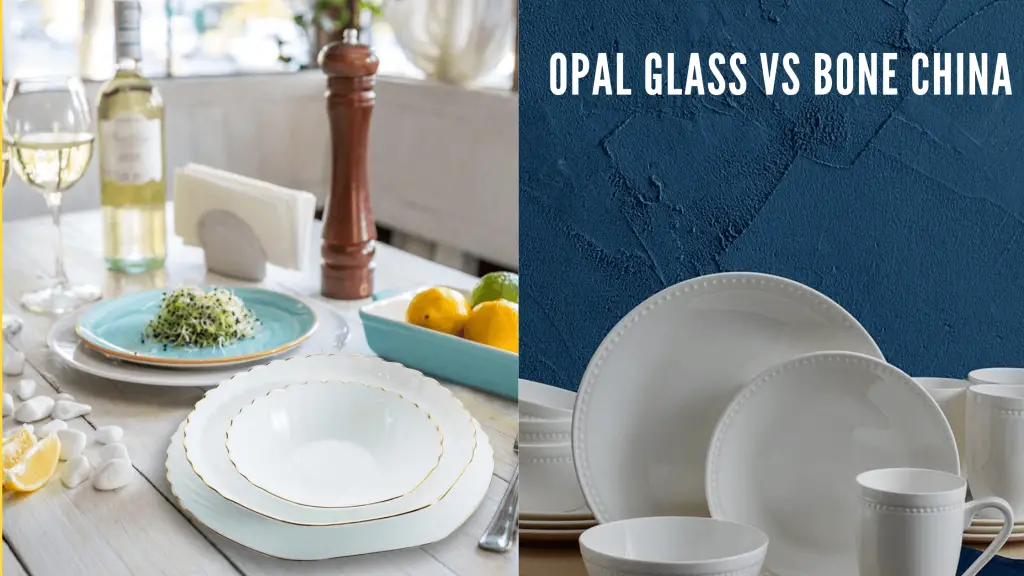
Opal glass is a 100% glass material while Bone china is a type of porcelain that is composed of bone ash, feldspathic material, and Kaolin.
Opal glass gets its white color from the addition of bone ash, tin dioxide, or antimony compounds, which are also sometimes added to ceramic glazes to produce a milky white color.
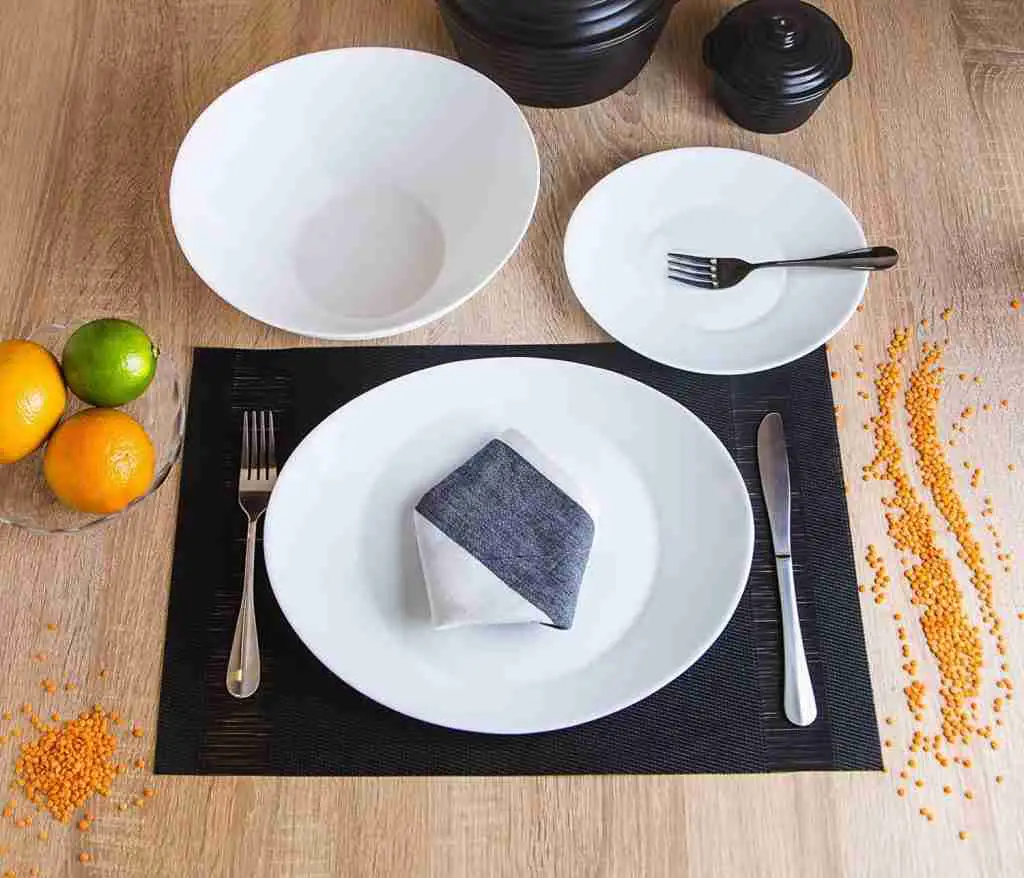
While Bone china gets its color from phosphate mixed with the bones that give Bone china its vivid color, ivory-white appearance, and glaze.
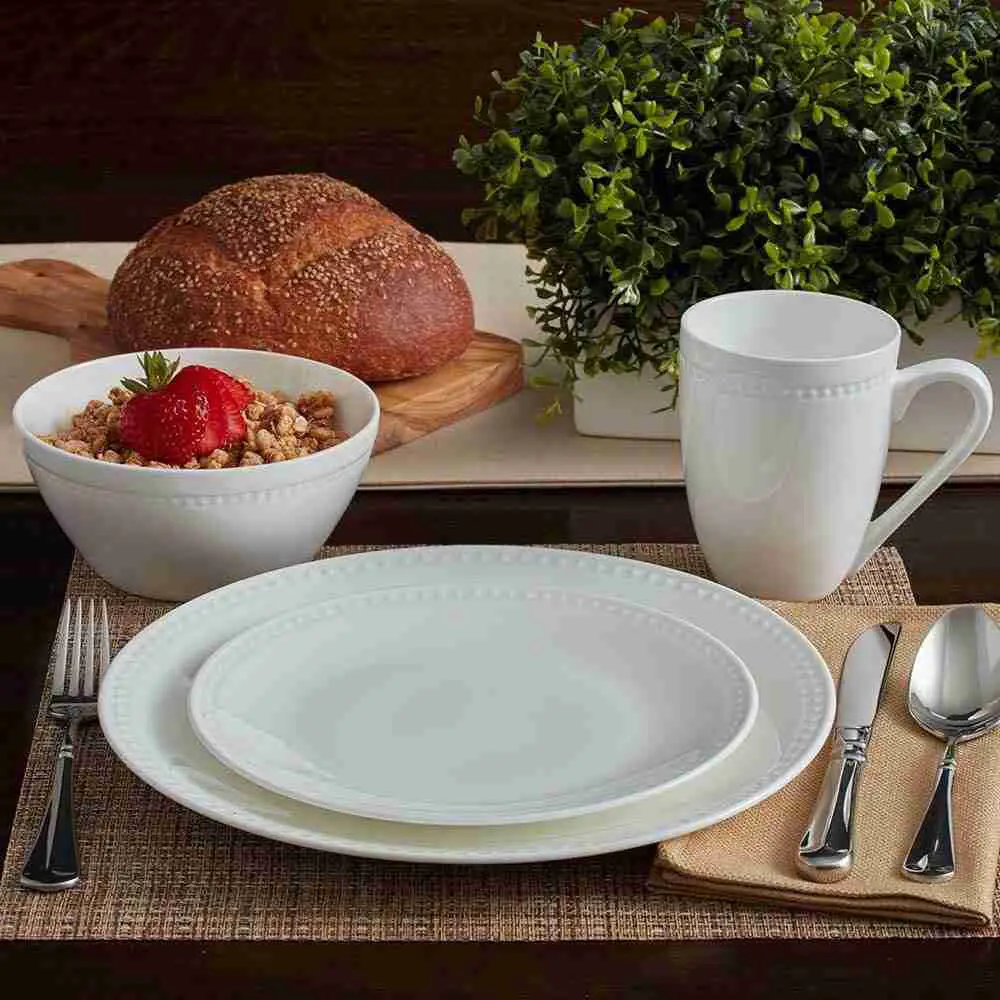
Most modern Opal glass has the appearance of opaque white glass but they are also manufactured in blue, yellow, brown, pink, and black while Bone China is known for its high levels of whiteness and translucency and unless specially treated, is usually tinged with blue or gray.
Bone china has less thickness compared to ceramic dinnerware and Opal glass.
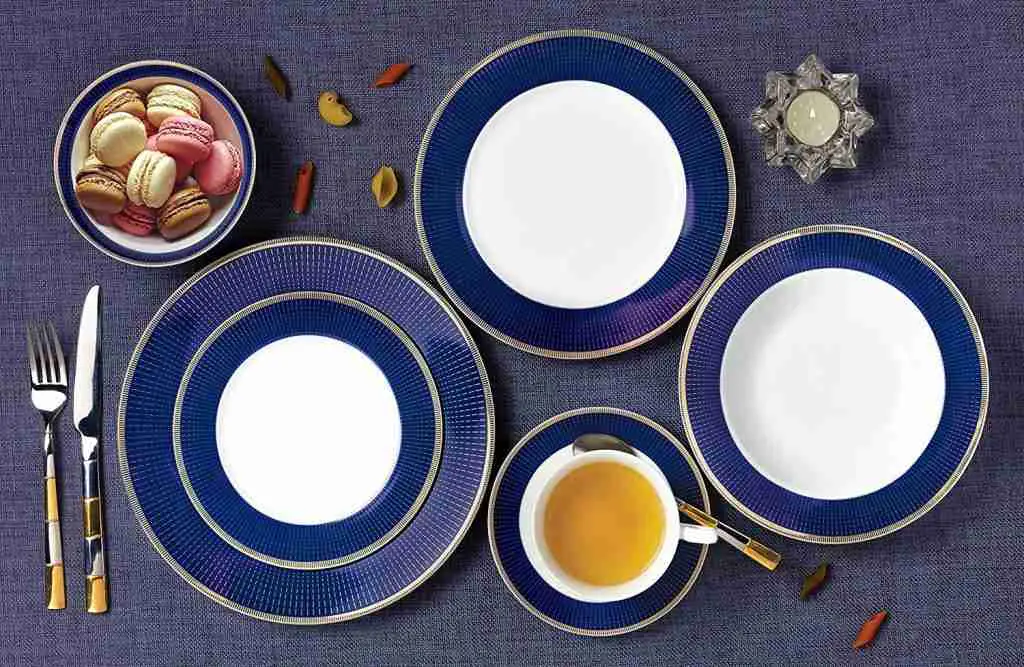
Opal glass and Bone china are both easy to use, microwave safe, and oven safe.
Opal glass and Bone china are both hygienic; they don’t absorb impurities, are ideal for serving food, and don’t react with hot or cold food.
Opal glass and Bone china both have high mechanical resistance and are Dishwasher safe.
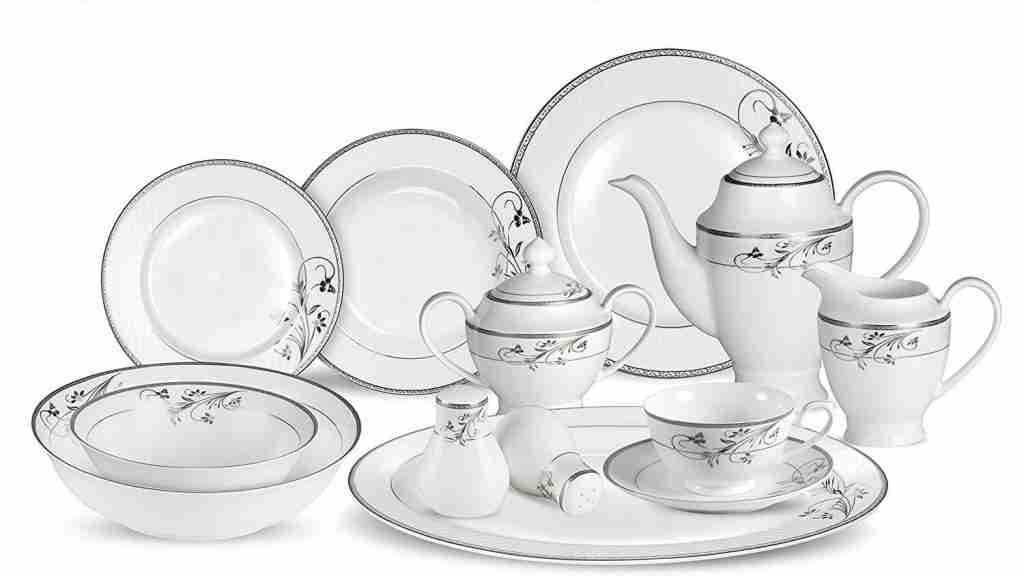
Bone china is strong, does not chip easily while Opal glass is extremely resistant to any breaks or cracks and also from thermal treatment and various changes in temperatures.
Opal glass is non-porous, non-toxic, and chemical-free, therefore is 100% food safe.

Opal glass is also sometimes also referred to as Milk glass. Opal glass is perfect for the production of personal care containers.

A very good recommended Opal glass product is the Bormioli Rocco Opal glass and the Matashi Opal Glassware dinner set.
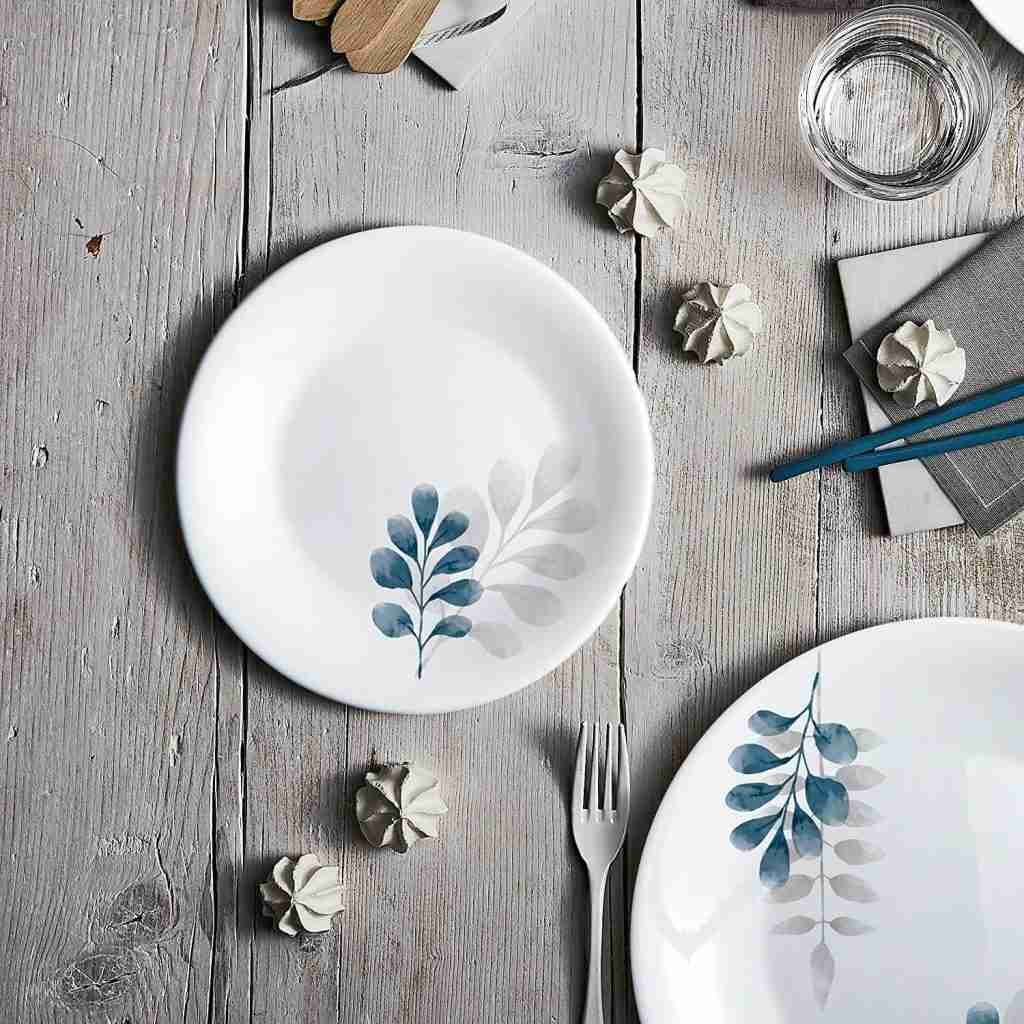
Finally, Bone china is sturdy, the strongest of the porcelain or china ceramics has high mechanical and physical strength. A very good recommended Bone china dinnerware sets are; Mikasa Loria Bone China Dinnerware sets, Lorren Home Bone China Dinnerware Set, and Lorenzo Elegant Bone china Dinnerware set.
IS OPAL GLASS BREAKABLE?
Since Opal glass is made from the finest tempered glass material, Opal glass can withstand everyday wear and tear. Yes! Of course, Opal glass is break-resistant, lightweight, and very durable!
Opal glass gets an exclusive thermal treatment that gives it the required shock-resistance it needs, you have no need to worry about your kids’ carelessness because Opal glass is break-resistance.
READ ALSO: WHICH DINNERWARE SET MATERIAL IS BEST FOR HEALTH?
READ ALSO: OPALWARE VS CERAMIC
IS OPAL GLASS SAFE?
The amount of time and carefulness were taken into account during the production of the Opal glass dinnerware set and the natural elements of composition put into Opal glass make it 100% food-safe and healthy.
IS OPALWARE SAFE FOR HEALTH?
Just as I have stated above, since Opalware is made up of tempered glass and prime quality Opal, making them hygienic, non-porous which means no micro-organisms will get stuck in it.
Opalware is therefore 100% hygienic and no need to worry about bacteria and feel reassured that your health is safe!
IS OPALWARE GLASS?
Is opalware glass? Yes, opalware is glass and it’s made of high tempered glass material. The glass material is extra strong toughened glass that is chip-resistant, lightweight, and suitable for daily use.
Opalware places are not only chip resistant. They are also broken and crack resistant. They save space in your kitchen cabinet because they are stackable. So, you don’t have to worry about space because opalware does not occupy space.
Opalware glass is very safe and is food grade. It doesn’t leach harmful chemicals, toxins, or odors into your food, making it the safest and healthiest option for your family.
It’s built for everyday use, its microwave, dishwasher safe and got a very beautiful color and design.
OPAL GLASS VS FROSTED GLASS
Opal glass is made up of 100% glass material while Frosted glass is produced by sandblasting or acid etching of clear sheet glass that creates a pitted surface on one side of the glass pane and has the effect of rendering the glass translucent by scattering the light which passes through, thus blurring images while still transmitting light.
Opal glass is mainly used in the production of dinnerware sets and other home and kitchen appliances while frosted glass is used for bathroom windows by providing natural light while obstructing the view from the outside.
Opal glass can be recycled but frosted glass is not suitable for recycling.
OPAL GLASS VS PORCELAIN
Opal glass is opaque or translucent glass. It is the main ingredient used in manufacturing Opalware dinner sets while porcelain is refined clay used in manufacturing ceramic dinnerware sets.
Opal glass gets its milk color from the mixture of bone ash in its manufacturing process. It can also be called milk glass. Opal glass and porcelain differ in appearance as opal glass tends to have a sharper color compared to porcelain ceramic.
WHAT IS OPALWARE?
Opalware is a scratch-resistant glass material used in the manufacturing of opalware dinner sets. They can be mixed with other materials like glass to get a tougher durable finished product. Its manufacturing process has exposed it to high temperatures which makes heat resistant, chip-resistant, and freezer safe.
OPALWARE MATERIAL VS MELAMINE
Opalware material is made from strong toughened glass that is durable, microwave friendly, lightweight, dishwasher safe, freezer safe, chip-resistant, scratch-resistant, and can be used to quickly heat your cold meals.
While Melamine is a type of hard resin. Melamine just like Opalware material is lightweight and durable. Melamine should not be used in the Microwave and should not be used to serve hot food because of its reaction to plastic.
READ ALSO: IS CORELLE MELAMINE
MELAMINE VS CERAMIC
Melamine is a hard plastic, a type of hard resin. This hard plastic is made of Melamine and other reinforcing agents while Ceramic is a general word for all non-metallic tableware. It is made up of various types of clay. Examples are clay pot, terracotta, and stoneware.
Melamine is very lightweight, durable, it has great shine since it is made of plastic. Once Melamine breaks, it is thrown away, cannot be recycled while Ceramics is quite heavy, because of its weight, it is difficult to maintain. Once it falls, it breaks.
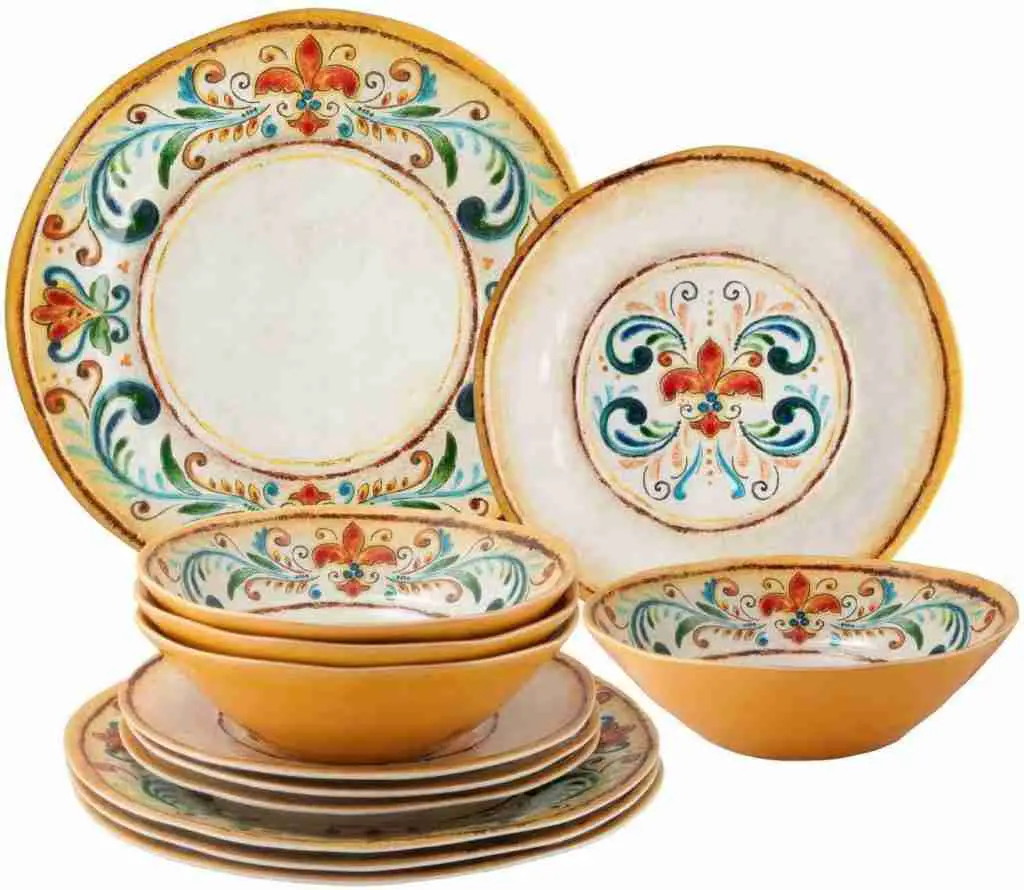
Melamine is scratch-resistant and can be used for a long time. Melamine is not oven safe and Microwave safe unless labeled by the manufacturer while Most ceramic dinnerware sets are oven and Microwave safe except otherwise labeled by the Manufacturer.
You shouldn’t serve very hot food in Melamine because of the reaction between the plastic and food because plastic can leach into food or meal while Ceramics are very thick and because of this, ceramics tend to retain heat inside. Ceramics are suitable for serving and consuming hot meals.
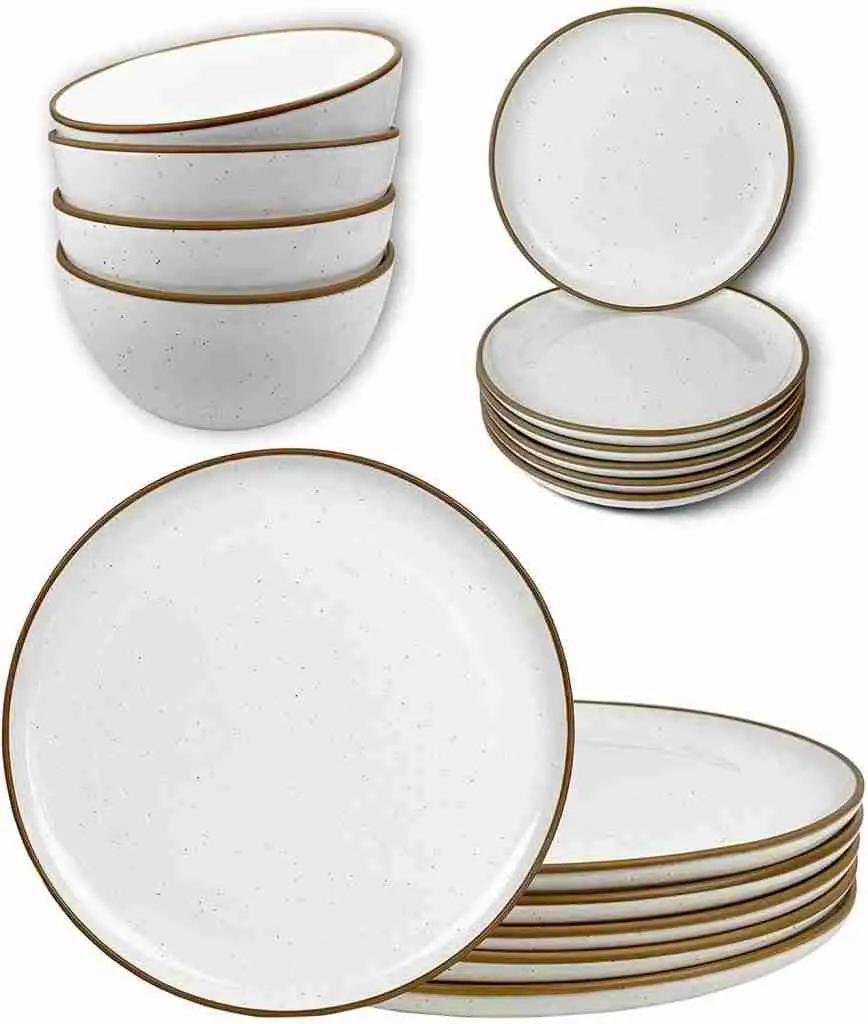
Melamine cannot bear a temperature of more than 71 degrees centigrade. Due to this property, health-conscious individuals do not prefer to use Melamine dinner sets while Ceramics don’t react with either hot or cold food so it is very useful for health-conscious individuals.
Melamine is affordable and can be easily carried about by children while Ceramic dinnerware sets are more expensive than Melamine dinner sets.
OPALWARE VS CORELLE
In the article, we are going to compare Opalware vs Corelle. I have used opalware and Corelle to serve both friends and family and I must say that they are both wonderful products.
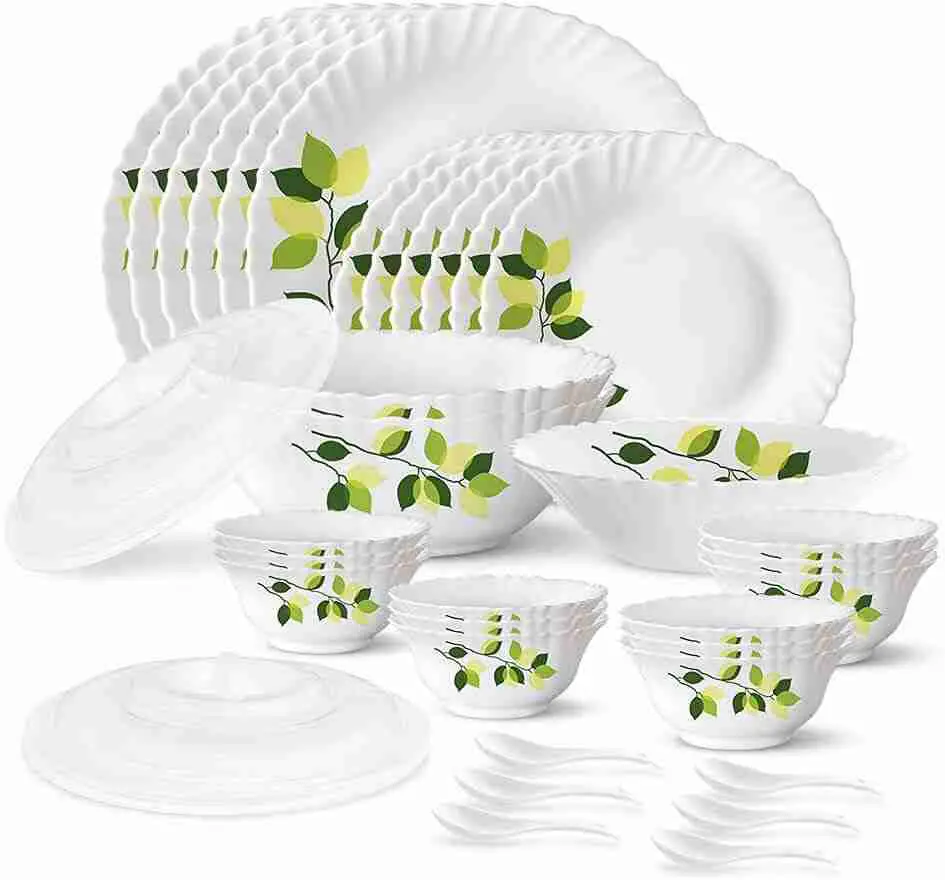
They are not the same; they’re unique and made of different materials. Now let’s talk about the materials opalware and Corelle are made of.
Opalware is made of high tempered glass material whose thermal treatment gives it mechanical resistance of up to three times more than other tableware while Corelle is made of vitrelle, a tempered glass product consisting of two types of glass laminated into three layers.
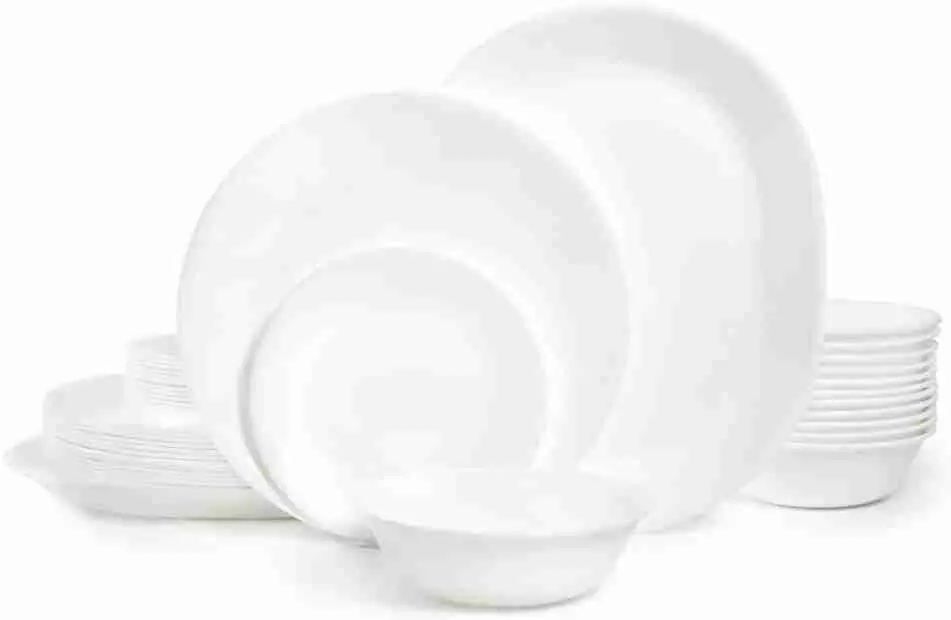
Next is how safe these products are. Opalware glass is safe because it doesn’t leach harmful chemicals, toxins, or odors into your food. Corelle is also safe too. The exterior of Corelle is entirely glass. There is no BPA in glass, and not likely any BPA in the interior of Vitrelle.
Opalware and Corelle are dishwashers safe, microwave safe(Corelle), and oven safe except it is written by the manufacturer that it is not. Always read the manual so that you’ll be very sure.
OPALWARE VS PORCELAIN
If you have Opalware or Porcelain in your kitchen cabinet, it’s important you know their differences. Having said that, let’s talk about Opalware vs Porcelain.
Porcelain is a ceramic material traditionally made from two essential ingredients: Kaolin also known as China clay, a silicate material that gives porcelain its plasticity, structure; and petunse which lends the ceramic its translucency and hardness.
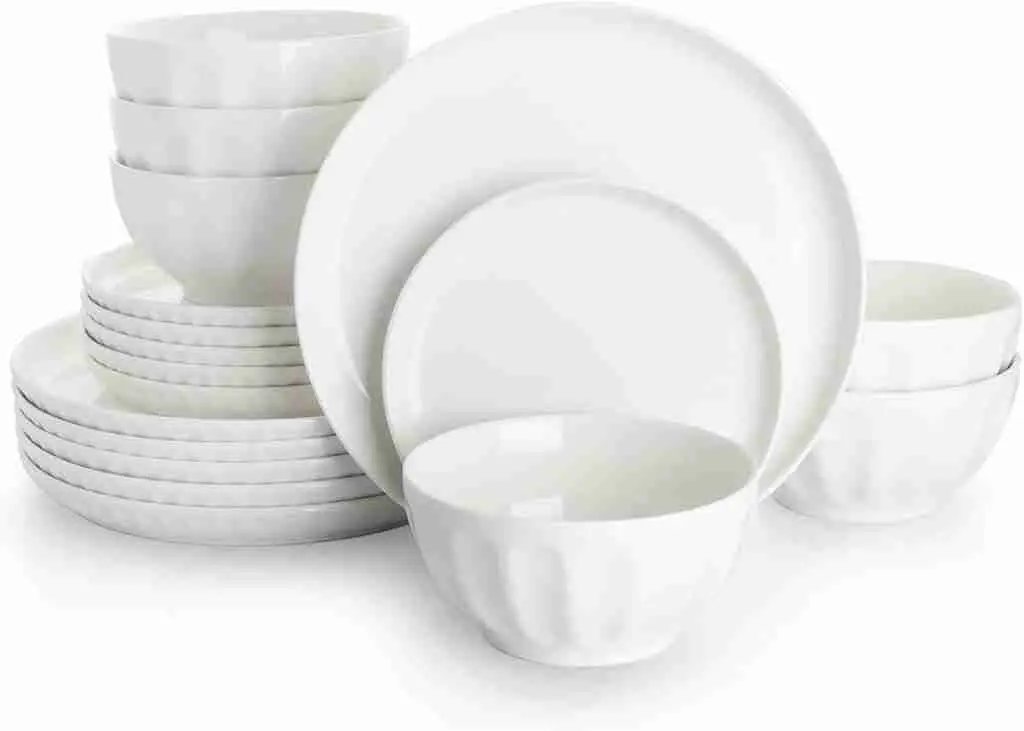
Opalware on the other hand is made of high tempered glass material whose thermal treatment gives it mechanical resistance of up to three times more than other tableware.
Porcelain and Opalware are both durable and stackable. They are both safe because harmful substances do not penetrate into your food when you use these products.
Porcelain is safe to go into the microwave if they have no metallic decorations and have the microwave symbol while opalware is microwave safe.
Most porcelain dinnerware is dishwasher safe, but hand washing is preferable for porcelain dinnerware with metallic decoration because it will save it from damaging while. Opalware is dishwasher safe.
2 thoughts on “OPAL GLASS VS BONE CHINA”
Comments are closed.